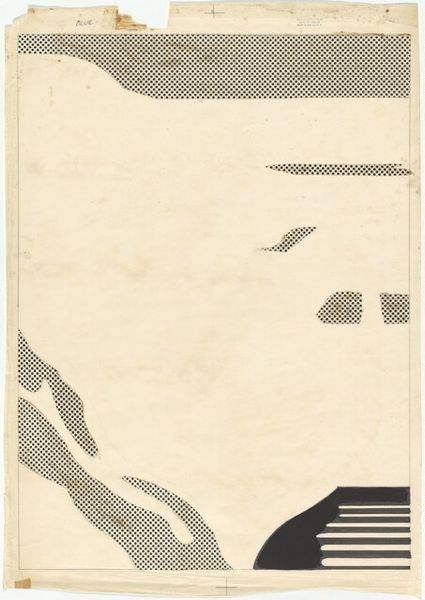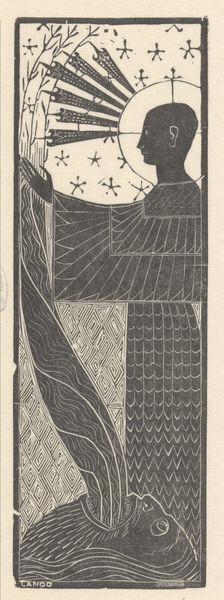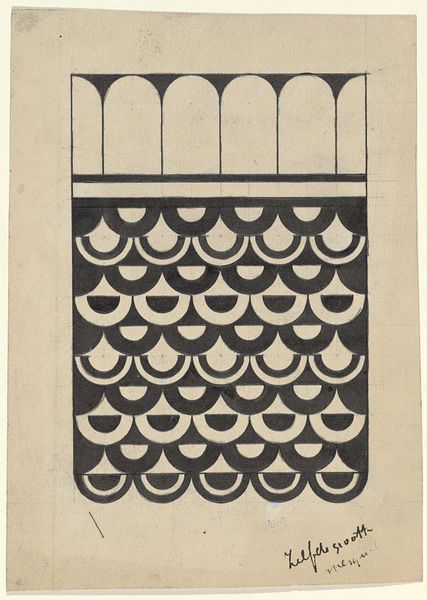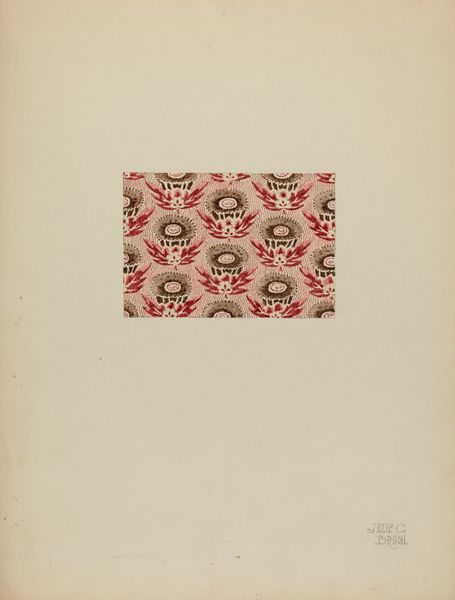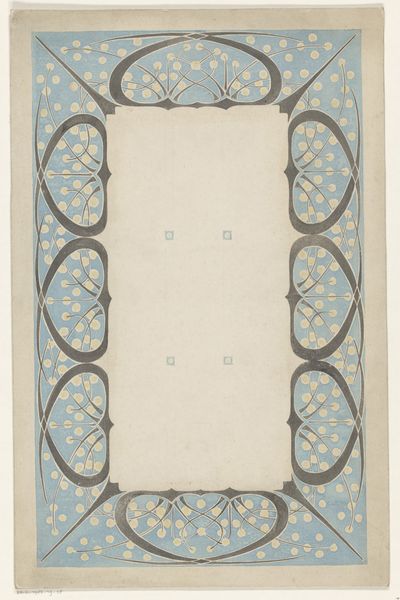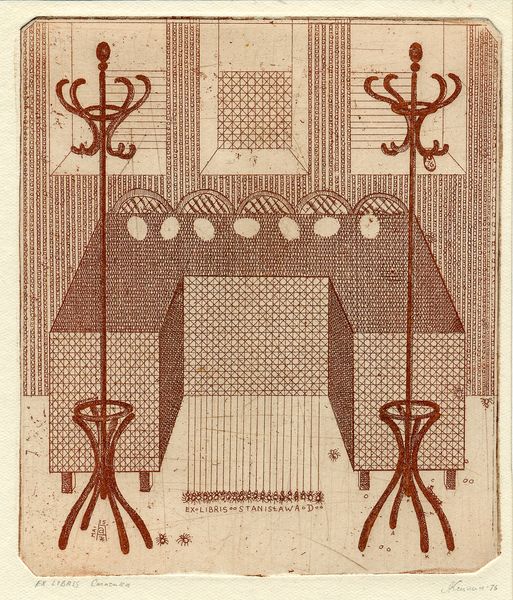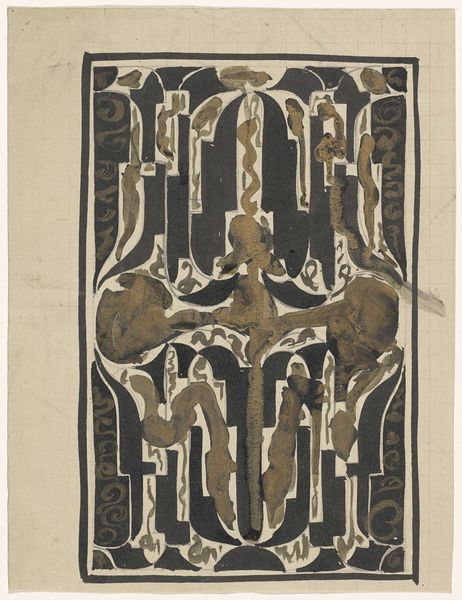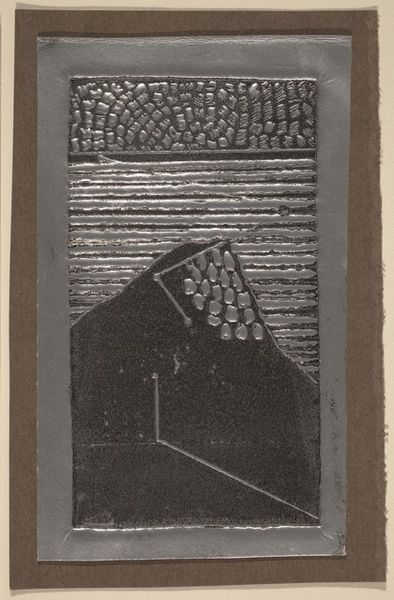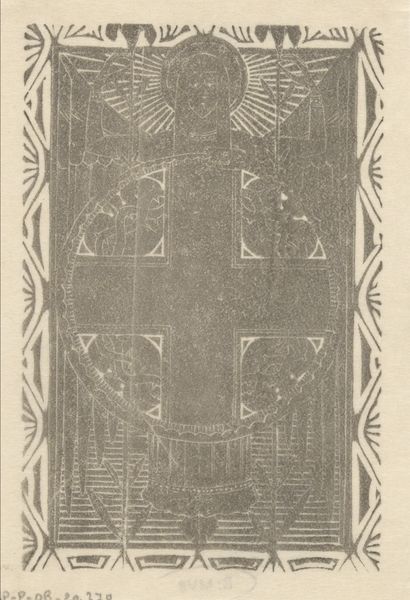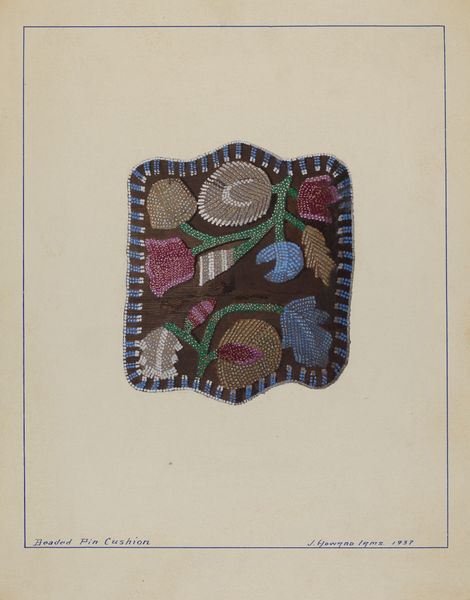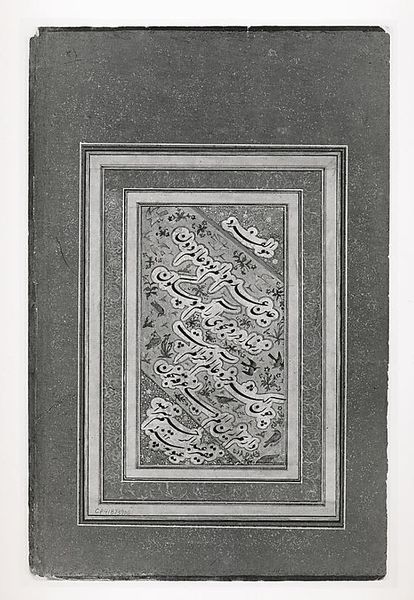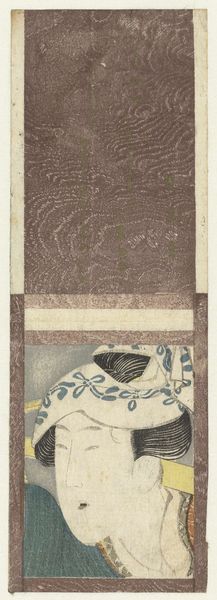
Ontwerp voor kamerversiering met verticaal twee panelen, de onderste met een ruïnelandschap in een liggend ovaal 1767 - 1823
0:00
0:00
drawing, paper, ink
#
drawing
#
neoclacissism
#
decorative element
#
landscape
#
paper
#
ink
#
pattern repetition
#
decorative-art
Dimensions: height 380 mm, width 256 mm
Copyright: Rijks Museum: Open Domain
Abraham Meertens made this design for a room decoration sometime around the turn of the 19th century, using pencil, pen, and watercolor on paper. The composition is divided into two registers, separated by decorative friezes above and below a patterned field. It's the lower register that particularly captures my attention. Here, Meertens has rendered a scene of classical ruins in exquisite detail, framed in an oval cartouche. The labor required to make this image must have been immense. The whole design gives an impression of patient, meticulous handwork, typical of the period. It is a true virtuoso performance, and this would have been deeply appreciated by wealthy patrons at the time. Though created with traditional materials, this work signals a shift towards more decorative arts. Meertens’s design blends elements of painting, drawing, and the decorative arts, challenging traditional hierarchies. It reminds us that the value and meaning of art lie not only in its subject matter but also in the artistry and labor invested in its creation.
Comments
No comments
Be the first to comment and join the conversation on the ultimate creative platform.
